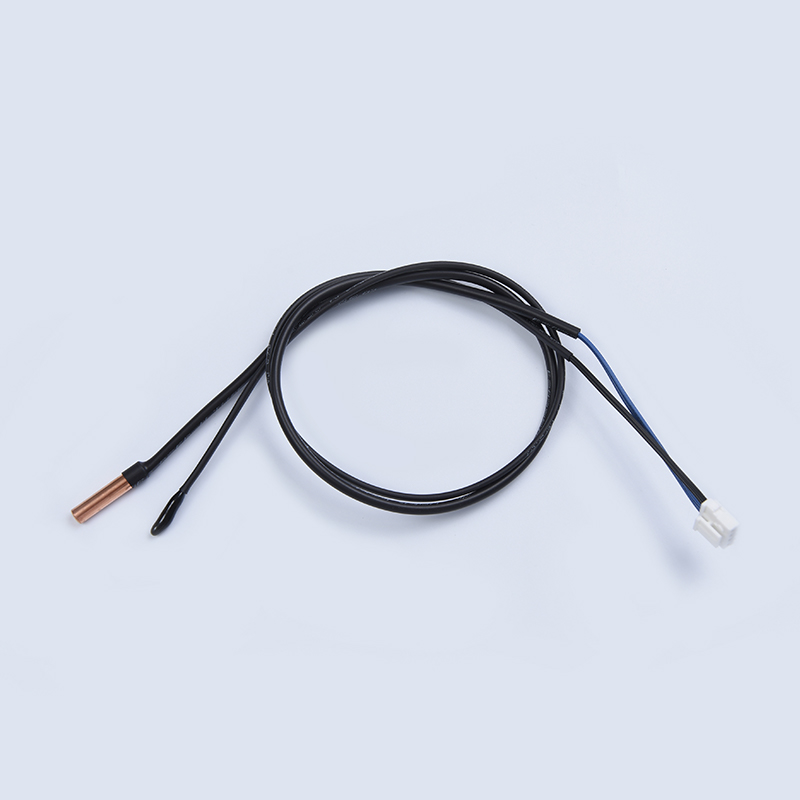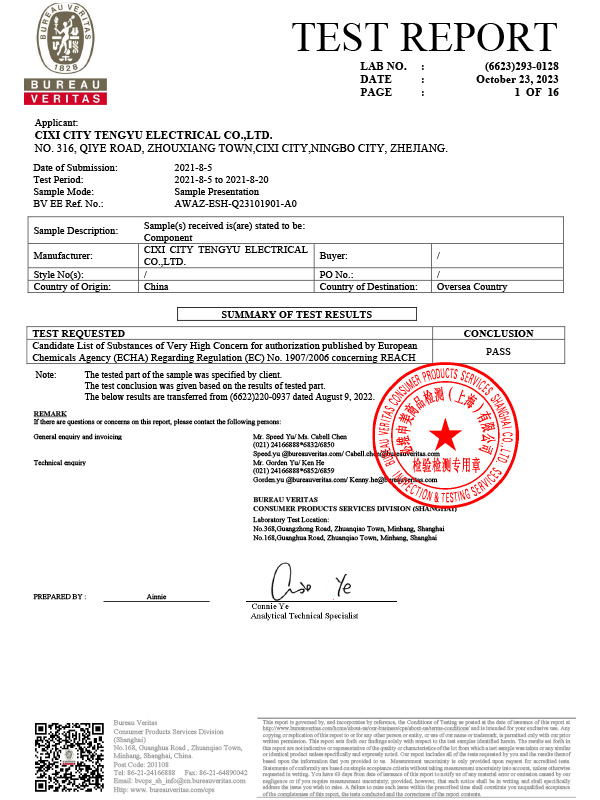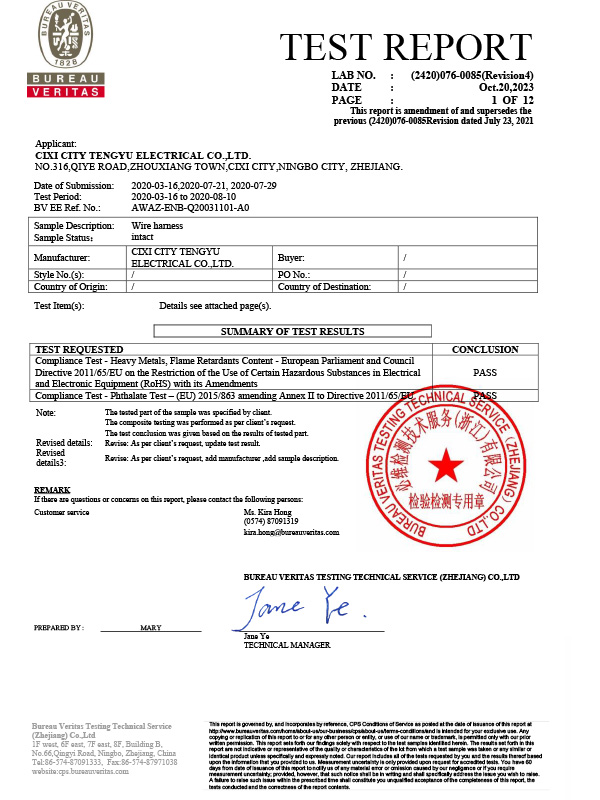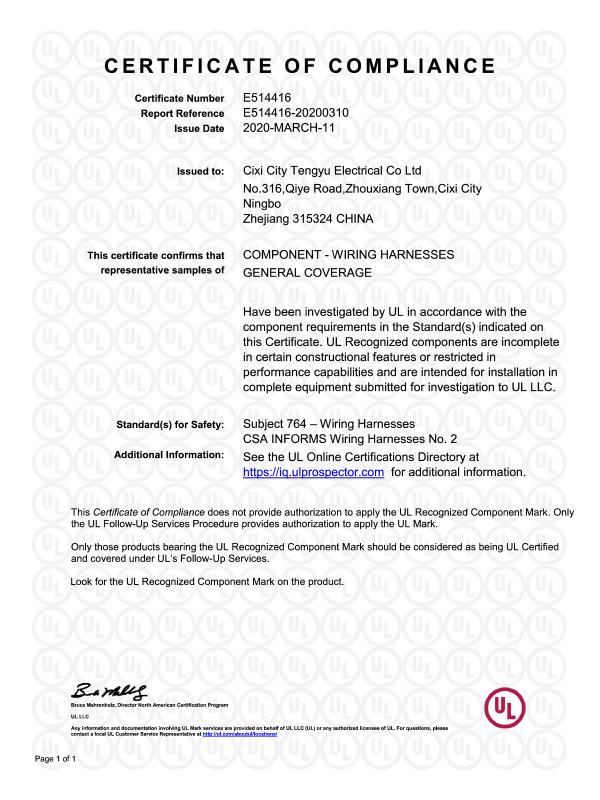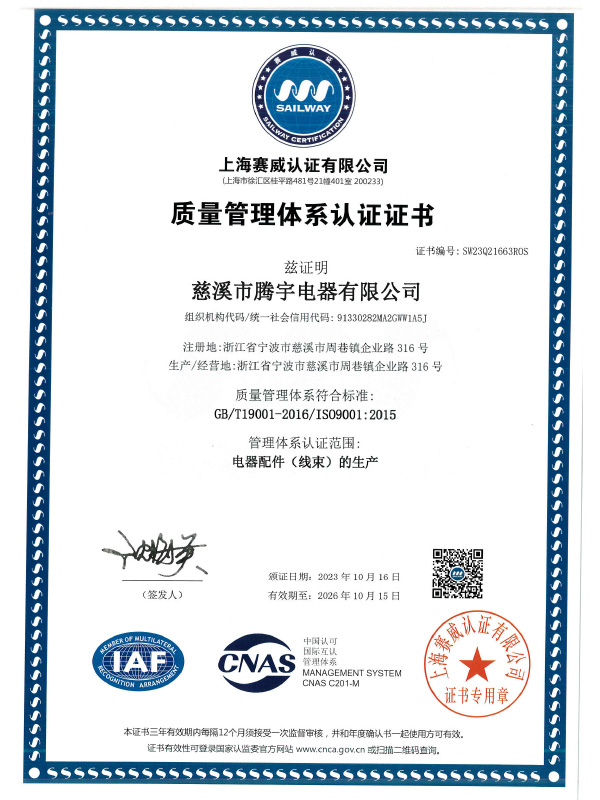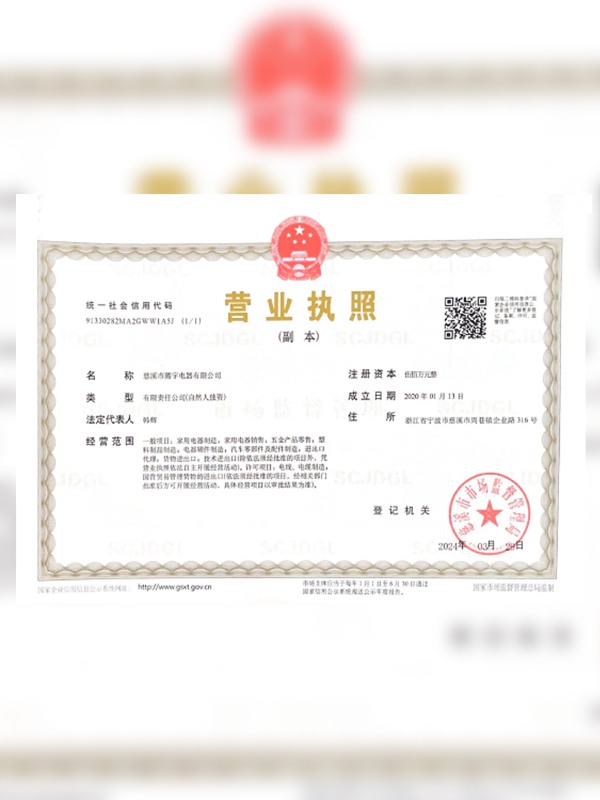What are the core differences between heater NTC temperature sensors and PTC sensors?
Sensor technology plays a crucial role in temperature control solutions for modern heater systems. Common solutions include NTC (Negative Temperature Coefficient) temperature sensors and PTC (Positive Temperature Coefficient) sensors. While both provide temperature detection and protection, their operating principles, application scenarios, and performance characteristics differ significantly.
Fundamental Difference in Operating Principles
NTC sensors: Their resistance decreases with increasing temperature, typically in an exponential manner. This characteristic enables continuous and accurate temperature detection over a wide temperature range.
PTC sensors: Their resistance increases with increasing temperature, particularly after a certain temperature point, where the resistance increases sharply. This nonlinear, abrupt change is often used for overtemperature protection.
Therefore, Heater NTC Temperature Sensor are more suitable for applications requiring high sensitivity and real-time feedback, while PTC sensors are more commonly used for self-recovery protection.
Differences in Accuracy and Sensitivity
In heater temperature control applications, temperature detection accuracy directly determines heating efficiency and user experience. NTC sensors: With high sensitivity and resolution, they can achieve accurate temperature measurement within ±0.1°C to 0.5°C, making them suitable for devices requiring precise temperature control, such as household water heaters, smart ovens, and industrial heating devices.
PTC sensors: While they excel at protecting specific temperature points, they offer lower accuracy for continuous temperature monitoring, making them unsuitable for applications requiring high temperature control precision.
Leveraging advanced technology and rigorous testing procedures, Cixi Tengyu Electric Appliance Co., Ltd.'s Heater NTC Temperature Sensors have consistently maintained industry-leading accuracy and consistency, ensuring stable and reliable temperature control for customers' equipment in a variety of applications.
Response Speed and Control Characteristics
NTC sensors: They respond quickly to temperature changes and are suitable for heating control systems requiring rapid dynamic adjustments. For example, in high-efficiency, energy-saving heaters, NTC sensors can promptly transmit temperature change signals, preventing overheating or excessive temperature fluctuations.
PTC sensors: Their response speed is relatively slow, and their characteristics favor safety protection over real-time monitoring.
This means that NTC sensors are a better choice for heating systems requiring real-time monitoring and closed-loop control.
Differences in Application
NTC temperature sensors: Commonly used for precise measurement and control, including heating tube temperature control, water temperature detection, air heaters, and electronic heating modules.
PTC temperature sensors: More commonly used for overcurrent and overtemperature protection. For example, in motors or power circuits, they automatically limit current when the temperature exceeds a certain point to prevent damage.
Teng Yu Electric's Heater NTC Temperature Sensor, built on years of technological expertise, is adaptable to a variety of packaging options and mounting methods. It serves a wide range of customers in home appliance manufacturing, automotive heating systems, and industrial equipment, providing safe, efficient, and customizable temperature control solutions.
Cost and Lifespan Differences
NTC sensors: With a relatively simple structure and mature manufacturing processes, they offer a good price-performance ratio while maintaining high performance.
PTC sensors: Due to their focus on protection, their unit cost may be lower, but their lifespan and accuracy are not as stable as NTC sensors.
What Factors Affect the Long-Term Stability of Heater NTC Temperature Sensors?
Material Properties and Selection
The core component of an NTC sensor is a semiconductor ceramic material. Its composition, sintering process, and stability directly determine the sensor's long-term performance. Excessive impurities or uneven material composition can cause resistance drift in long-term high-temperature environments.
High-quality ceramic formulations and advanced sintering processes significantly reduce aging effects, improving sensor resistance stability over thousands of hours of operation.
Cixi Tengyu Electric Appliance Co., Ltd. adheres to strict standards in material selection to ensure raw material purity and batch consistency. Through precise process control, we guarantee excellent long-term stability in diverse application environments.
Operating Temperature and Environmental Conditions
NTC sensors are often exposed to high temperatures during long-term operation.
High temperature effects: Sensors are prone to performance drift or even failure when exposed to temperatures approaching the upper limit of the material.
Humidity and corrosive environments: The infiltration of moisture or chemical gases can affect the stability of the sensor's packaging and electrodes, leading to measurement errors and shortened lifespan.
Teng Yu Electric utilizes a variety of packaging options and insulation materials, enabling Heater NTC Temperature Sensors to adapt to diverse environments, such as humid and hot environments, air heating, and liquid heating, ensuring stable performance even under harsh conditions.
Packaging and Process Reliability
The sensor's packaging process directly impacts its long-term reliability.
Sealing: Inadequate packaging can easily allow moisture or impurities to enter, causing sensor parameter drift.
Mechanical Stress: If thermal expansion and contraction or installation stress is not properly buffered, microcracks can easily form within the sensor's internal structure, impacting stability.
Cixi Tengyu Electric Appliance Co., Ltd. utilizes internationally advanced packaging technology and a strict quality control system to ensure stable product performance during high and low temperature cycling and long-term operation, meeting customers' high demands for durability and consistency.
Current Load and Power Dissipation
NTC temperature sensors generate self-heating during operation due to the flow of current.
If the current flow is not properly designed, long-term excess heat can cause irreversible changes in the sensor's resistance, reducing its measurement accuracy.
In high-power applications, proper circuit matching and thermal management are particularly important.
Teng Yu Electric fully considers current load and thermal effects during product development. Through circuit optimization and structural design, we ensure that the Heater NTC Temperature Sensor maintains high levels of stability and reliability even during long-term operation.
Long-term Aging and Fatigue Effects
Any electronic component will experience aging over time. For NTC sensors, aging typically manifests as a slight drift in resistance.
Although this drift is gradual, it can have a significant impact in high-precision applications.
This process can be significantly mitigated by optimizing materials, improving package airtightness, and conducting rigorous factory aging tests.
Cixi Tengyu Electric Appliance Co., Ltd. implements rigorous aging tests and long-term stability verification during production to ensure that its products meet international industry standards after thousands of hours of operation.
Complexity of Application Environments
Different application scenarios pose different challenges to the long-term stability of sensors.
Home appliances: They must cope with frequent starts and stops and temperature fluctuations.
Industrial equipment: They operate at high power year-round, placing higher demands on the thermal stability and lifespan of sensors.
Automotive systems: Vibration, humidity, and high-temperature cycles place even more stringent demands on packaging and material stability. With over 20 years of industry experience, Teng Yu Electric is able to provide customized designs based on customer needs, ensuring that Heater NTC Temperature Sensors can maintain long-term stable operation in various complex environments.
What mechanical and electrical considerations should be taken into account when installing a heater NTC temperature sensor?
Mechanical Considerations
Suitable Installation Location
The detection performance of a heater NTC temperature sensor is directly related to its installation location. The sensor should be as close as possible to the controlled heating element or the medium being measured to ensure real-time temperature response. Mounting too far away can result in detection delays or excessive temperature differences, affecting temperature control accuracy.
Contact Surface and Thermal Path
NTC sensors require a good thermal path for rapid response. If mounted on a metal heating tube or heating plate, ensure close contact with the surface to avoid air gaps. Thermally conductive adhesive, heat conducting sheets, and other auxiliary materials must be applied evenly and reliably to improve heat transfer efficiency.
Mechanical Fixing and Stress Control
During long-term high and low temperature cycling, the sensor may be affected by thermal expansion and contraction, as well as vibration. Avoid excessive compression or uneven stress during installation, as these can cause microcracks in the ceramic sensor and shorten its service life. Cixi Tengyu Electric Appliance Co., Ltd. fully considers mechanical shock and thermal stress resistance in its product designs and emphasizes appropriate fixing methods in its customer application guidance. Protection and Environmental Adaptability
For sensors used in humid, dusty, or corrosive environments, protective measures must be taken. For example, properly sealed packaging and protective housings can effectively prevent long-term environmental damage to the sensor. Teng Yu Electric's products undergo rigorous verification of packaging and material selection to ensure long-term stability in harsh environments.
Electrical Factors
Electrical Connection Reliability
During installation, the stability of electrical connections is crucial. Loose or poor contact can cause signal interference or abnormal resistance values. During installation, ensure that the pins or wires are securely connected, and select the appropriate connection method (such as soldering, plugging, or crimping) based on the application environment.
Cable and Insulation Design
The sensor output signal is a change in resistance, which is susceptible to external electromagnetic interference. Proper cable routing and high-quality insulation design can effectively reduce noise interference. For industrial applications with complex electromagnetic environments, shielded cables can be considered to enhance interference resistance. Cixi Tengyu Electric Appliance Co., Ltd. strictly controls lead material and insulation grade in product design to ensure customer electrical safety under various operating conditions. Current Load and Self-Heating Effects
NTC sensors generate a certain amount of self-heating when powered. Improper operating current design can cause temperature reading deviations or even damage. During installation and wiring, ensure that the sensor circuit matches the overall power supply to avoid accuracy degradation due to overload. Teng Yu Electric rigorously simulates various current load conditions during product testing to ensure long-term stable operation of the sensor in customer equipment.
Grounding and Electrical Safety
For equipment requiring high voltage or high power heating, careful attention must be paid to the grounding design of the sensor and the overall system during installation to avoid the risk of leakage or electric shock. Proper grounding not only improves system safety but also reduces electrical noise interference with sensor signals.
Comprehensive Installation Recommendations
During the design phase, comprehensive consideration should be given to the sensor's installation space, heat dissipation path, and electrical layout.
During production and assembly, standardized process procedures must be followed to prevent damage to the sensor caused by improper handling.
Pre-shipment environmental simulation testing ensures the sensor maintains stable performance over time at the customer's site. With over 20 years of experience in the industry, Cixi Tengyu Electric Appliance Co., Ltd. not only provides high-quality Heater NTC Temperature Sensors, but also offers professional support to customers during product installation and use through comprehensive management of the entire process, including R&D, production, quality control, and application guidance, ensuring the ultimate in safety, reliability, and accuracy.




 中文简体
中文简体